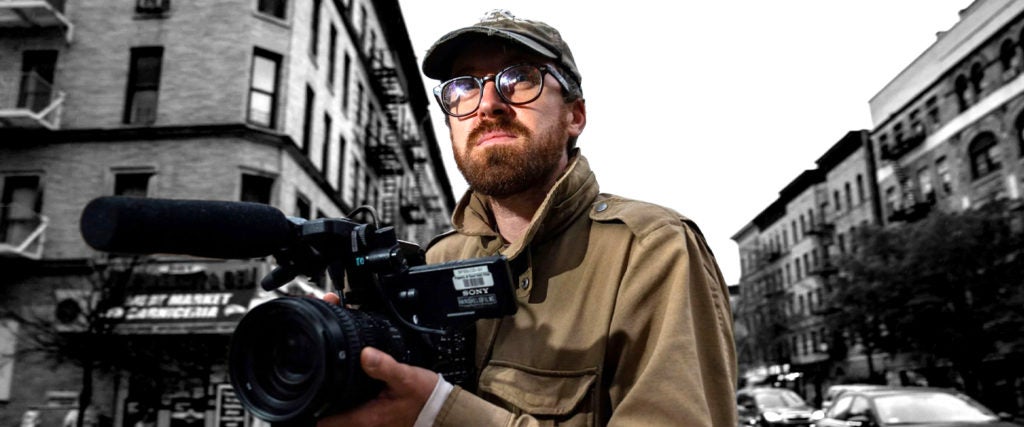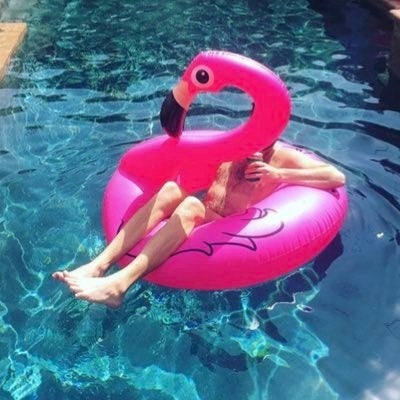One of my unshakeable pet peeves is when people stay glued to their phones while they have a TV show or movie on. Which is odd, as I do this all the time. The dignified academic part of my brain insists that a visual medium, if you hope to get any value out of it, must be looked at. But the shitposting part of my brain says, “We’ll just half-listen while firing off some tweets, and if I lose the plot, I can rewind a little.” If this works, it’s because a lot of TV and movies are comparably middling in their ambition and effect. It’s not enthralling; why give it all my attention?
Writing in the New Yorker last month, critic and author Kyle Chayka looked at a range of Netflix shows including Emily in Paris — something of a must-hatewatch for the social media set — and declared the arrival of “ambient TV,” the stuff designed for phone-distracted viewers. One could argue that television has always been for “passive engagement,” but in the streaming era, Chayka observes, plots are thinning out, conflict is being erased from narrative and pleasant B-roll has overtaken the screen time of actors and reality contestants. You can ignore this content for long stretches and not miss much. The trend, I realized, could help to explain why even in a year I’ve largely been stuck at home, I can’t give a shit about 99 percent of TV. Nothing had hooked me, and the shows I went deeper on eventually turned frustrating.
That changed when I discovered HBO’s How To With John Wilson over Thanksgiving week. Premiering only a few weeks after Emily in Paris, you might initially mistake it for another low-investment proposition: a bare-bones title, quiet music, cinéma vérité aesthetic, no conventional cast besides our host, and Wilson’s voice has a meek or hesitant timbre, almost like he’s embarrassed to be taking up any space. (It will remind you of Nathan Fielder from the docu-comedy series Nathan for You, who happens to be an executive producer here.) But, very quickly — should you keep the phone out of reach — you discover that How To is not really like any TV you’ve experienced before. It is a fascinating record of New York City in the 21st century, of human behavior generally and how the mundane commingles with the profound.
"how to with john wilson" is a singular audiovisual experience. my jaw drops five times an episode. i can't believe it's allowed on television.
— laser (@bobby) November 28, 2020
When I recommend the show to friends, I tell them to learn as little as possible about it beforehand and dive right in — it’s that immersive. Should you need further encouragement, however, I’ll add that How To’s most radical choice is to eliminate the slack for an audience’s unfocused, wandering gaze. You cannot take your eyes away for a second, lest you miss an incredible piece of footage spliced into the episode. Wilson spent two years shooting around his city, chatting with strangers and capturing the true optics of the place in a way that will transport anyone who’s lived there right back. You can smell the subway garbage. And the show itself embodies the art of noticing, particularly the kind of details that appear slightly amiss but otherwise elude our busy consciousness. Wilson says he pulls out the camera whenever there’s “a glitch in the Matrix,” while Fielder says “John’s really good at discovering things” you’d overlook walking by, “but when you’re really forced to look at it, it really makes you think about how confusing modern life is.” It’s the weirdness and sheer variety of existence at street level.
Wilson’s narration is calm and rather dry. Sometimes it trails off completely. With only the audio, or words on a page, you’d wonder what exactly the show is supposed to be. It’s only in sequencing the ambient urban imagery — which is not, of course, ambient at all — that Wilson gives his material its uncanny balance. A person “watching” while on their phone won’t have the pleasure of asking themselves how a skunk got into an ATM vestibule, or why part of the tarmac appears to be on fire as we peer out the window of a plane, or how that guy decided to play the flute while hanging upside-down on some scaffolding.
Wilson’s curiosity delivers left turns as unpredictable as his archive of field recordings: Depending on the episode’s subject, he’ll end up at a conspiracy conference in Idaho, MTV’s Spring Break or a dinner attended by a group of disgruntled soccer referees in Long Island — and if you don’t stick with the visual logic of his montage, you’re losing the magic of these tangents and departures. Everything is essential.
Footage is from the very funny and good and weird ‘How to With John Wilson’
— d. patrick rodgers (@dpatrickrodgers) October 30, 2020
The series is a treasure in the pandemic era (the first season finale coincides with the March lockdowns), since it serves as a breathtaking archive of the world before. But I am even more grateful for how it retrains the eye, asking us to remember how this medium is supposed to work. Until others pointed it out, I hadn’t recognized actor Kyle MacLachlan as the guy struggling to swipe his MetroCard in a lingering candid shot — and I bet there are many more such grace notes to appreciate on a rewatch.
The streaming giants have no use for this artistic understatement; they know your mind is elsewhere, so they sketch in the bare contours of entertainment to keep you idly binging. How To With John Wilson is riveting despite its tranquil surface because it doesn’t take that shortcut, ever, and you’re always waiting for the next surprise to swim into frame. At long last, a TV show you’re meant to actually see.

